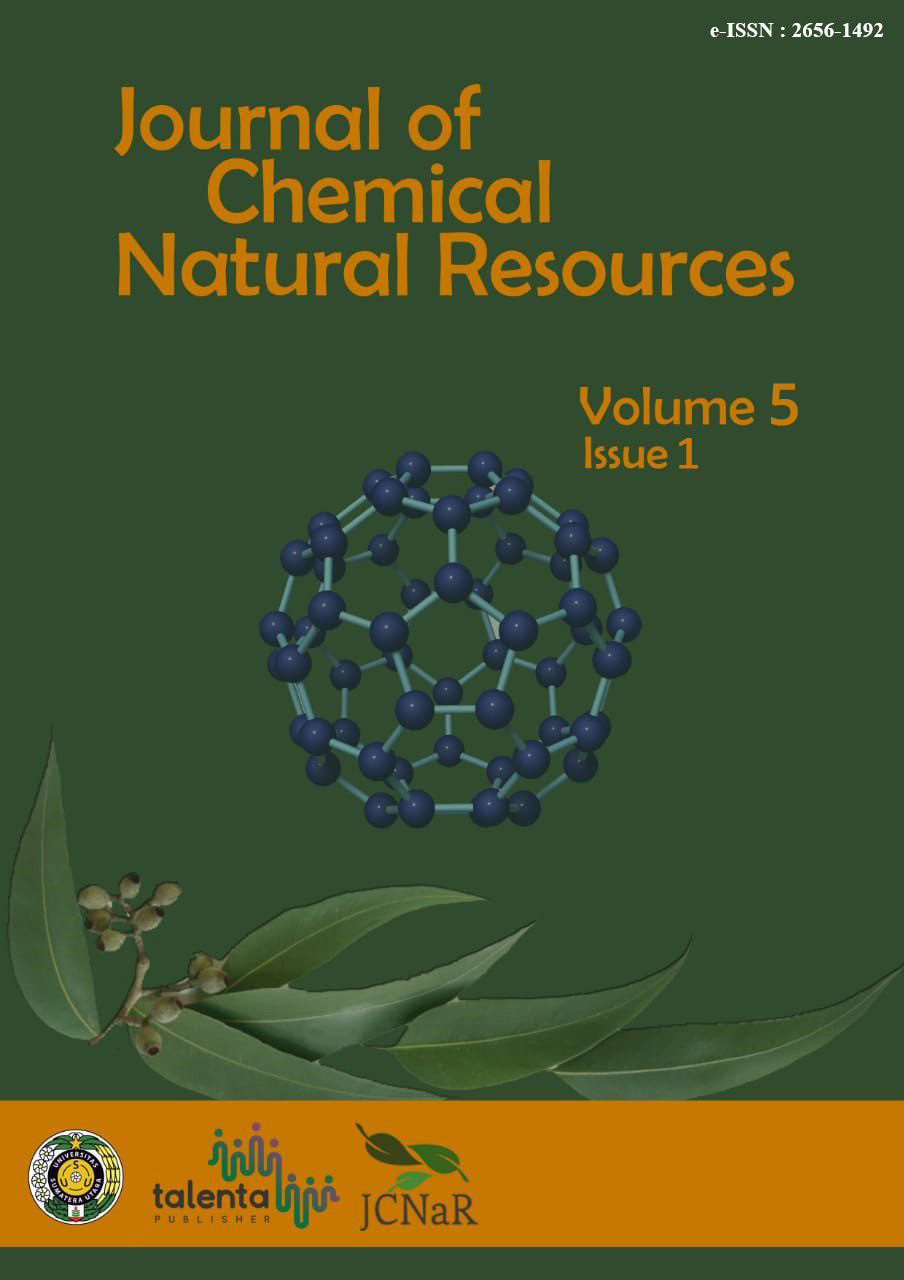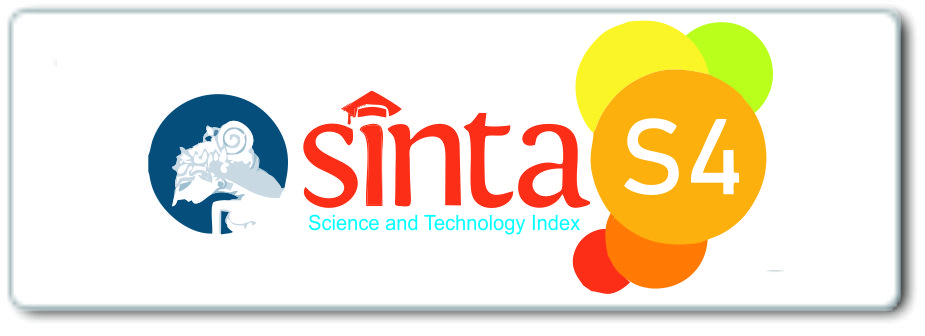Isolation and Identification of Phenolic Compounds from Sea Grape (Coccoloba uvifera (L.) L)
DOI:
https://doi.org/10.32734/jcnar.v5i1.11984Keywords:
Sea Grape, (Coccoloba uvifera (L.) L.), Spectrophotometer, PhenolicAbstract
Isolation and identification of phenolic compounds from Sea Grapes (Coccoloba uvifera (L.) L.) leave, where as much as 1700 g have been macerated using methanol. The concentrated methanol extract was dissolved in water and partitioned with ethyl acetate. Ethyl acetate concentrated extract was separated by column chromatography with chloroform as eluents: methanol 90:10; 80:20; 70:30; 60:40 v/v. The compound obtained was purified by column again using chloroform: ethyl acetate 70:30 v/v with the resulting was 10 mg of brownish yellow paste with a value of Rf = 0.5. The resulting compounds were then analyzed using a UV-Vis, FT-IR, and 1H-NMR spectrophotometer. Based on the data analysis, the results showed phenolic compounds in Sea Grape.
Downloads
References
Saifudin A. 2014. Natural Compounds of Secondary Metabolites Theory, Concepts, and Purification Techniques. Yogyakarta. Deeppublish/publisher.
Nicholas W. 2006. Social Research Methods. Sage Publications Ltd. New Delhi
Pangelly, S. 2006. Occupational Therapy in Housing. Whurr Publisher. London
Vermerris W and Nicholson R. 2006. Phenolic Compound Biochemistry. Published by Springer. The Netherlands
Muldja MH. 1995. Instrumental Analysis. First Print. Airlangga Press University. Surabaya
Dawes, CJ. 1998. Marine Botany. John Wiley. New York
Bethany, BC. 2003. Antimicrobial Activity and Constituents of Coccoloba Acrosticoides. Brazil

Downloads
Published
Issue
Section
License
Copyright (c) 2023 Journal of Chemical Natural Resources

This work is licensed under a Creative Commons Attribution-ShareAlike 4.0 International License.














